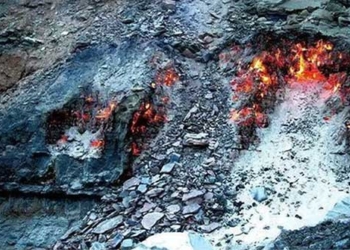There are numerous abandoned locations around the world that serve as testaments to the resilience of nature. From temple ruins completely enveloped by tree roots to once-bustling battlefields now covered by lush vegetation, the rich flora and fauna at these sites demonstrate that when human influence is removed, nature swiftly fills the void.
Abandoned Sites around the World Reclaimed by Nature
- 1. Ta Prohm Temple, Cambodia
- 2. Houtoumen Village, Shengshan Island, China
- 3. Mangapurua Valley, New Zealand
- 4. SS Yongala Shipwreck, Australia
- 5. Ilha da Queimada Grande, Brazil
- 6. Demilitarized Zone, South Korea
- 7. Al Madam Village, United Arab Emirates (UAE)
- 8. Fukushima, Japan
- 9. St Kilda, Scotland
- 10. Stack Rock Fort, Wales
1. Ta Prohm Temple, Cambodia
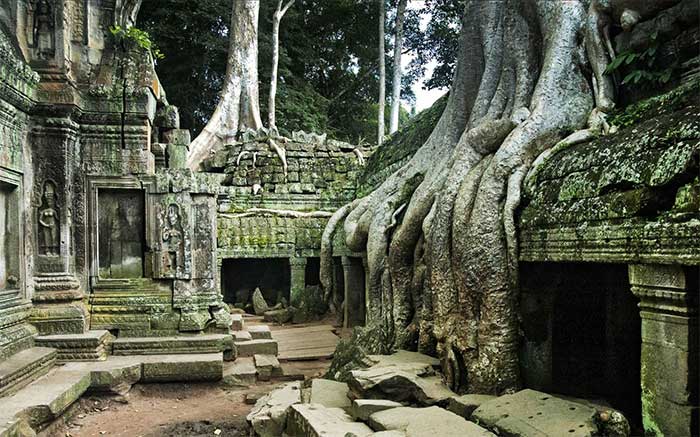
This site was used as the backdrop for the 2001 film “Lara Croft: Tomb Raider.”
The temple is located to the east of Angkor Thom, the former capital of the Khmer Empire, and was famously featured in the 2001 film “Lara Croft: Tomb Raider.” Built in the late 12th century as a Buddhist monastery, it once supported over 12,500 people who lived in the area and served the temple, alongside more than 80,000 others in nearby villages. However, three centuries later, the temple and its surrounding jungle were abandoned when the king relocated the capital from Angkor.
Since the temple complex has largely been devoid of human activity, vegetation has thrived throughout the site, with the most famous species being the fig tree, banyan tree, and gigantic kapok tree, whose roots envelop the walls and tower above human heads.
Wildlife once flourished in the forests surrounding Angkor before overhunting and illegal trade in the 20th century caused significant population declines, leaving only a small number of common species such as deer, wild boar, and leopard cats. Since 2013, Cambodia has been working to reintroduce several animal species to Angkor, including gibbons, silvered langurs, smooth-coated otters, hornbills, and Indian Peafowls.
2. Houtoumen Village, Shengshan Island, China
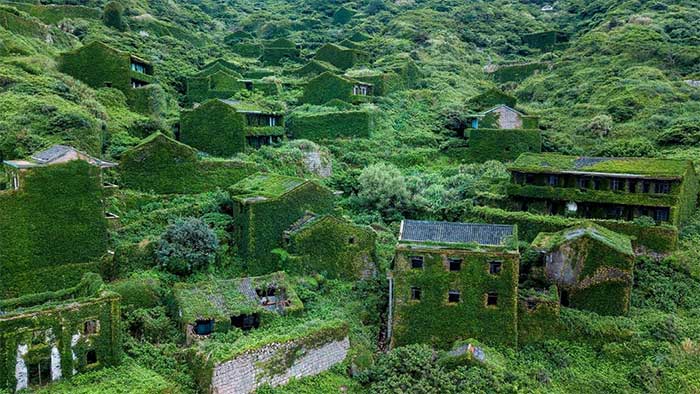
Houtoumen Village currently attracts tens of thousands of tourists each year. (Photo: CNN).
Once a bustling fishing village, Houtoumen on Shengshan Island, part of the Zhoushan Archipelago, now resembles a ghost town. It was once home to over 3,000 residents, but due to its inaccessibility—taking over five hours to reach the mainland—residents faced challenges in accessing education, employment, and food. People began leaving the village in the 1990s, and by 2002, it was completely abandoned.
Decades of desolation have allowed nature to reclaim the land, with lush vines covering everything that remains. Today, the village is a tourist attraction, welcoming over 90,000 visitors in 2021.
3. Mangapurua Valley, New Zealand
After World War I, land in the Mangapurua Valley on New Zealand’s North Island was granted to returning soldiers. This settlement once housed nearly 40 soldiers and their families who attempted to build a new life. However, its remoteness and poor soil conditions led to its abandonment by the mid-1940s.
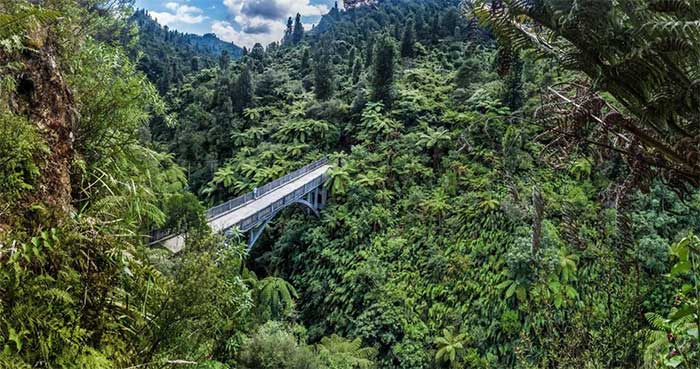
“The Bridge to Nowhere” in Mangapurua Valley. (Photo: Wildernessmag).
Native forests and wildlife have since returned. Today, the only evidence of the settlement is the “Bridge to Nowhere,” a concrete structure, while everything else—homes, farms, culverts, and roads—has been overtaken by forest and is now part of Whanganui National Park.
Due to the previous farming and gardening efforts of the veterans, much of the forest in Mangapurua Valley is now grassland and wetlands, alongside a few fruit trees and rose bushes that reflect a bygone era. Surrounding Whanganui National Park is home to the largest population of North Island brown kiwis in New Zealand and many bird species. The Whanganui River supports 18 fish species, including eels, freshwater crayfish, and black flounder.
4. SS Yongala Shipwreck, Australia
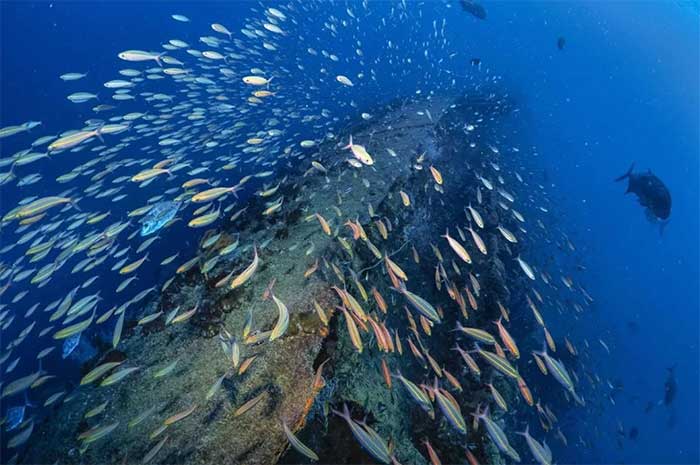
SS Yongala after more than a century underwater has become an ecosystem.
In 1911, Cyclone Yasi sank the SS Yongala in the Great Barrier Reef marine park, resulting in the disappearance of 122 people, marking one of the most tragic maritime disasters in Australian history, and the wreck was not identified until 1958.
As Australia’s largest and most intact shipwreck, SS Yongala has become an ecosystem after more than a century submerged in water, providing habitat for numerous vibrant species. Today, the 109-meter-long wreck is covered in a dazzling coral blanket and is home to hundreds of different species, from loggerhead turtles and stingrays to bull sharks and moray eels.
5. Ilha da Queimada Grande, Brazil
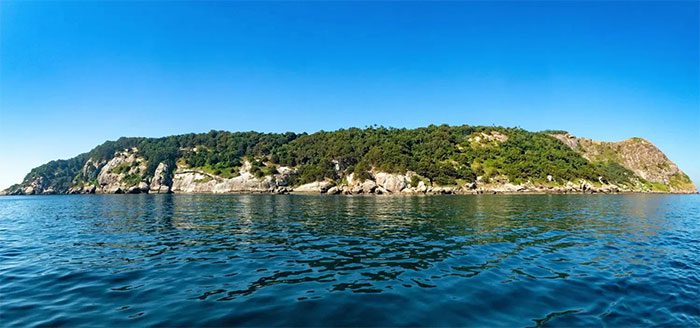
The island is home to around 2,000 golden lancehead vipers.
This island, surrounded by cliffs and covered in low tropical forest and grasslands, lies off the southeastern coast of São Paulo, Brazil. Though small, it is home to about 2,000 golden lancehead vipers, the world’s highest concentration of this species, giving it the nickname Snake Island. The island’s fauna also includes bats, lizards, two resident bird species (the house sparrow and bananaquit), as well as many migratory and seabird species, such as the brown hawk.
Once part of Brazil’s continental shelf, the island was completely isolated by rising sea levels about 11,000 years ago. Unable to leave, the golden lancehead vipers were forced to adapt.
In the early 20th century, three or four lighthouse keepers and sailors lived on the island, but it has been abandoned since the 1920s. Today, the island is government-owned and a protected area. Visits to the island require a permit to maintain the ecosystem and ensure safety.
6. Demilitarized Zone, South Korea
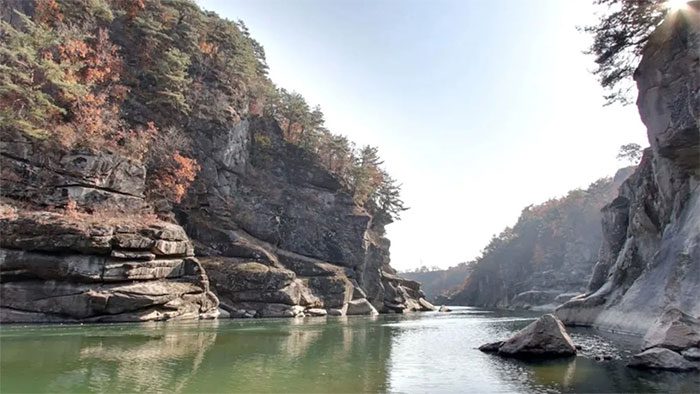
Demilitarized Zone DMZ.
Seventy years after the war, the Demilitarized Zone (DMZ) stretching 257 km continues to divide the Korean Peninsula and remains uninhabited. Once a center of conflict, with old villages and military equipment still scattered throughout, the absence of human presence has turned this land into a haven for wildlife.
This area is now home to over 6,000 species of plants and animals. Of the 267 endangered species in South Korea, 38% reside in the DMZ, including Mongolian racerunners that inhabit sandy areas and under rocks; otters swimming along the river that runs between the two Koreas; endangered sika deer; and the largest habitat of Amur salmon.
Since 2019, 11 walking trails have been opened along the DMZ, ranging from 1 to 5 km, as a way to “return the DMZ to the people.”
7. Al Madam Village, United Arab Emirates (UAE)
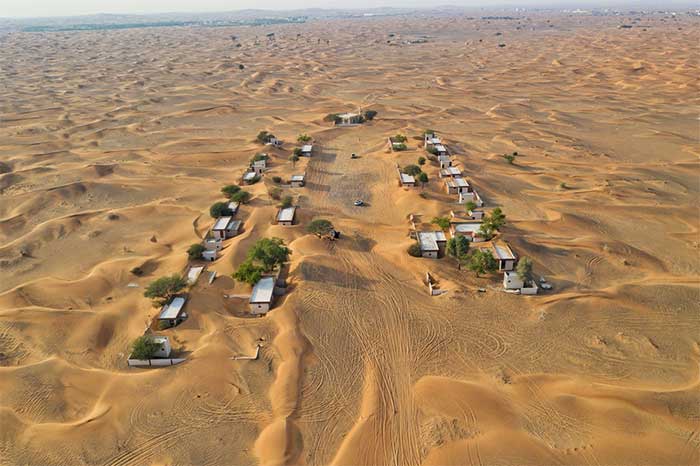
In Al Madam village, nature is colored by sand.
Located 70 km from Dubai in the UAE, Al Madam is a small ghost town that has become a tourist attraction in recent years. It consists of two rows of fully furnished houses and a quaint synagogue, making the town look as if it has just been abandoned, leaving homes that are now being overtaken by the desert.
While the history of Al Madam remains shrouded in mystery, media reports suggest the village was constructed in the 1970s as part of a public housing project for Bedouins—a native Arab tribe— with about 100 residents living there. It was abandoned just two decades later.
There is no clear answer as to why the village was deserted, but researchers point to the rise of cities like Dubai and Sharjah, which attracted people seeking better opportunities and living conditions. Now, charming homes are slowly disappearing beneath the wild sands.
8. Fukushima, Japan

Japan established a 20km Fukushima exclusion zone, evacuating over 150,000 people.
The major earthquake followed by a tsunami in 2011 resulted in the second-worst nuclear disaster in the world at the Fukushima power plant in northern Japan. In the aftermath, the Japanese government established a 20 km exclusion zone around Fukushima and evacuated over 150,000 people. Since then, evacuation orders have been gradually lifted, and residents have been encouraged to return to some towns and villages, although several areas remain off-limits.
The areas affected by the nuclear disaster are not lifeless wastelands. There is an astonishing diversity of wildlife in the exclusion zone, with wild boar populations growing to the extent that managing their numbers has become necessary. Other thriving species in the area include Japanese macaques, raccoon dogs, Japanese serows, and red foxes.
9. St Kilda, Scotland
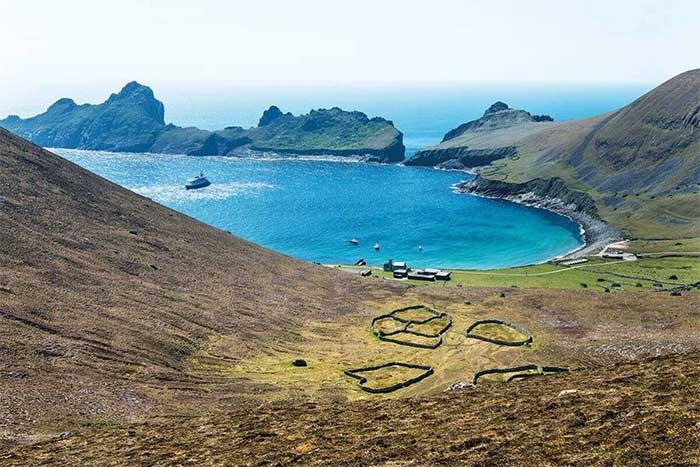
Village Bay on Hirta Island, St Kilda. (Photo: Geographical).
Located over 60 km west of the Outer Hebrides, St Kilda is the remotest part of the British Isles, off the northwest coast of Scotland. The St Kilda archipelago boasts stunning natural beauty, from towering cliffs and unique beaches to crystal-clear waters and flooded caves. In 1930, due to food shortages, lack of access to medical care, and declining population, the remaining 36 inhabitants on the island requested resettlement to the mainland.
With no human activity, St Kilda has become a haven for wildlife and an ecologically significant site, home to nearly one million seabirds, including the largest colony of Atlantic puffins in the UK. The islands, which include Hirta, Boreray, Dun, and Soay, are now a wildlife sanctuary recognized as a UNESCO World Heritage Site.
The islands also host a unique species of pink-footed goose and a large rodent that is twice the size of the common mouse. Boreray Island and its surrounding beaches are home to the largest colony of sea eagles in the world, and all Soay sheep globally are descended from the flock on Soay Island.
10. Stack Rock Fort, Wales
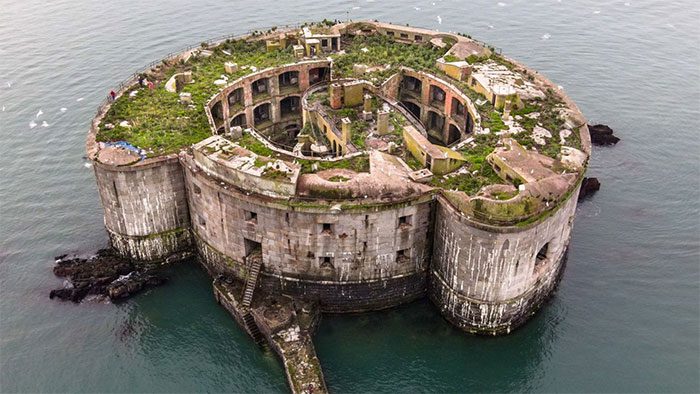
Constructed over 150 years ago, Stack Rock Fort is now home to seabirds and seals.
Stack Rock Fort is a long-abandoned fort located off the coast of Pembrokeshire in western Wales. Built in the 1850s to defend against a maritime invasion, the fort was originally equipped with cannons, soldiers, and officers, but its use gradually declined over the years. During World War I, it housed a small number of soldiers and was decommissioned in 1929.
Since being abandoned nearly 100 years ago, the fort has been gradually overtaken by flora and fauna. The new manager, Nicholas Mueller, director of the community interest company Anoniiem, which purchased the fort and plans to maintain it as a “living ruin,” noted that chestnut trees and seabirds are quite prevalent here, including at least three types of gulls with populations ranging from 300 to 500 on the fort at any given time.
Mr. Mueller mentioned that a few gray seals frequently visit the fort. Large black cormorants have formed flocks around the fort, and they can often be seen perched with their wings spread wide.








































